The history of the invention and the evolution of photographic equipment
To memorize pleasant moments to contemporaries of the XXI century allows almost any gadget. Today, users of cameras, smartphones and tablets are shooting for memory any events and moments, share pictures on social networks. Photography became available everywhere, but it was not always the case. The history of the camera deserves special attention.
Content
Long way to the invention of the camera
Any invention has a basic basis - it is a centuries-old fruit of the thoughts and experiences of natural scientists and scientists. The camera was no exception: its prototype appeared many centuries ago.
The history of the camera obscura
The camera for obscura, which is mentioned in the writings of the ancient philosophers and mathematicians of China and Greece, became the basis for the invention of the camera.The device was a box with a small hole in one of the faces through which the light beam penetrated. The scheme of building the image in it was reduced to flashing on the opposite wall in an inverted form the contours of objects outside.
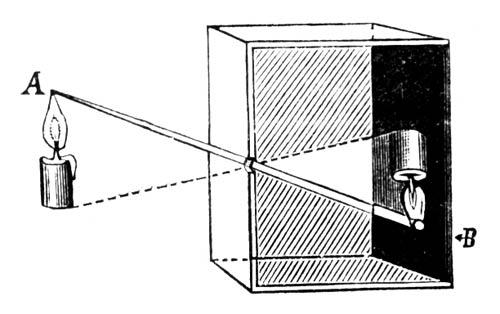
The brilliant Italian Leonardo da Vinci, who lived in the 15th century, for the first time gave a detailed description and explained the principle of the camera obscura. At the beginning of the 17th century, the German astronomer I. Kepler perfected the device with a lens inserted into the hole and discovered the mathematical law of reflection of light in mirrors.
Mathematical calculations of the refraction of light - this is the first step towards the invention of the prototype of a modern camera.
Appeared and quickly gained popularity portable camera obscura with an inclined mirror, with which street artists created portrait silhouettes. But naturalists continued to look for a way to save the resulting image.
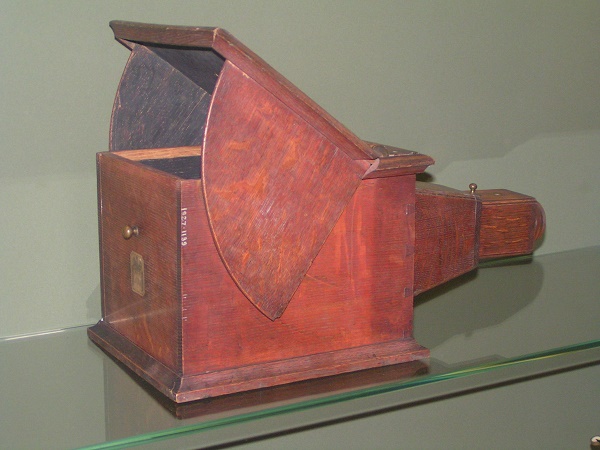
Attempts to save the image
The first who managed to save the image, was the Frenchman N. Nyeps. This image dates from the year 1826. As a sensitive material, the enthusiast used covered asphalt varnish plate, which is placed in the chamber with a hole. The camera itself was installed on the windowsill so that the hole was directed to the window. After 8 hours of exposure on the plate, the outlines of the window opening appeared.
To make the image clearer allowed processing of the plate with chemical reagents.
Other enthusiasts continued the search for a simpler method of saving the image. In 1837, thanks to the efforts of the Frenchman L. Daguerre, a method of obtaining a single clear picture was invented. And English inventor U. Talbot came up with a way to get a print (negative), with the help of which it became possible to copy pictures.
Russian enthusiasts also contributed to the development of photography. In 1840, in Russia, photographer A. Grekov set up the production of a small batch of improved S.L. Levitsky apparatus, working on the basis of inventions Daguer and Tabolta.
The first reflex camera, invented in 1861 by T. Sutton, became a real prototype of mass photographic equipment.. In it, the image was fixed on a glass plate-lens. A film mirror cameras appeared thanks to the inventor D. Eastman, who replaced the glass plate with a film in 1883.After 5 years, he invented a light film camera "Kodak"With film in the form of a roll and became the founder of the company with the same name, which grew in the following decades in the largest corporation.
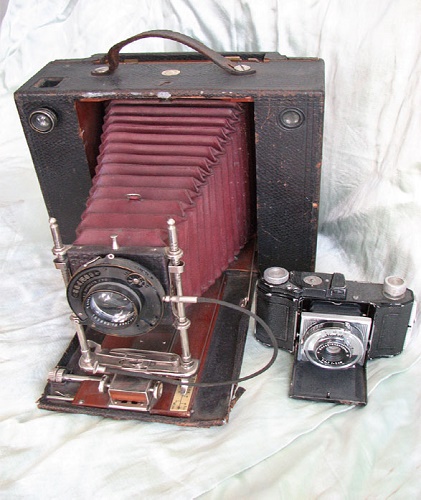
The first SLR camera
The development of photography in the XX century
With the beginning of the 20th century, the development of photography industry began to gain momentum.
- The company "Leica" has started mass production of analog devices (mid 20s).
- The company "Lumiere" took up the issue of plates for color images (10 years).
- Color film was invented (30 years), and in 1942, the Kodak company launched the production of color photo and film film.
- In the postwar years, film photographic equipment began to be produced in many countries. Did not stay on the side of the USSR. The mass models were steel Zenith, Seagull, Salute.
- Shooting cameras have improved: they began to build in autofocus, flash, various automatic modes.
- In 1963, the Polaroid released devices with printing pictures.
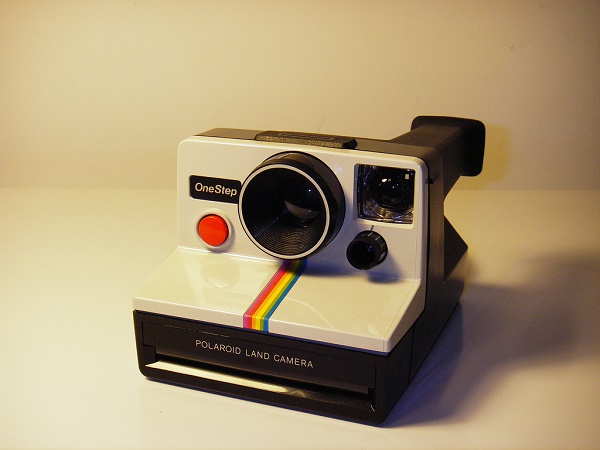
The first Polaroid with the ability to print pictures
Self-printing imaging devices did not receive rapid development, but gave impetus to the search for a more advanced technology of fixing moments. And this technology was found in 1974 by V. Boyle and D.Smith, engaged in research in the field of semiconductor optoelectronics. They have been created CCD sensorconsisting of individual photosensitive metal-oxide-conductors. The device recorded the electric potential arising under the influence of light. This discovery made it possible to use a CCD array for storing optical images. The technology formed the basis for creating a digital astronomical camera, and thanks to it, the first digital cameras appeared in the 1980s.
Evolution of digital photography
The inventor of the camera, which became the prototype of mobile cameras using digital technology, was an engineer at Kodak S. Sasson. Its conventionally portable device dates back to 1974. He weighed nearly 3 kg, and a 100 × 100 pixel image was recorded with a magnetic tape; it took 23 seconds to save 1 photo. In 1981, Sony, based on a CCD sensor, developed a household camera model that recorded images in analog format onto a flexible magnetic disk (2-inch floppy disk). Thus began the era of digital cameras, yet expensive for mass use.
Many other companies have offered their models to the market, simultaneously improving optical sensors and media used for recording images and encoding formats.
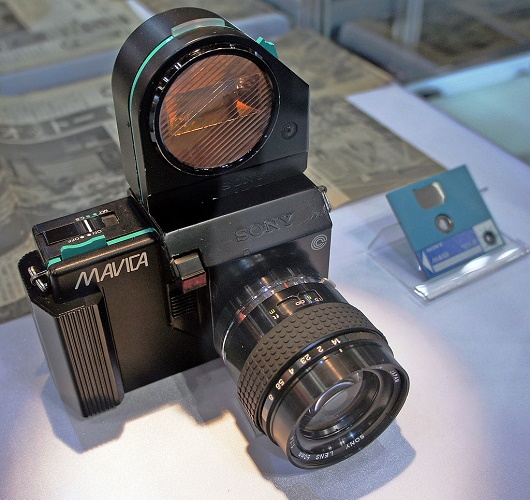
Sony Mavica (1981)
In 1994, SanDisc was created standard CompactFlash 512 MB, which over the past decades has been refined and increased in the amount of memory. Since 1995, they began to produce more affordable digital devices for the mass user, which are used to produce images of excellent quality. For online viewing of captured images, the devices are equipped with LCD displays. At the same time, the options for approximate / remote shooting of the object, the auto focus function and other control modes appeared. When affordable cameras came to the mass consumer, the photo conquered the world. Not only professional photographers, but also amateurs took up photography.

Advanced optical sensors and flash memory cards have been adopted by manufacturers mobile gadgets. Modern models of netbooks and laptops, tablets and smartphones are necessarily equipped with photos and web-cameras. Advanced gadgets can replace a budget digital camera, and top-end devices are able to compete with professional photo equipment in terms of picture quality.Digital mobile devices gradually drove out of the market devices on the film.
Predictable future in the development of photography
The evolution of the camera continues in our days. The American company Lytro Inc has already created a plenoptic chamber, in the equipment of which a microlens array is used to capture light information in 4 dimensions. The purpose of this device is to record what is happening in the whole space of the light field. The image produced by the camera is equally clear for both near and distant objects in the image. This device is already called the camera of the future.
Engineers of leading companies work in several directions.
- Improved recording technology of the light field.
- New image definition formats are being developed that will replace the prevalent HD, Full HD and the recently appeared 4K video format.
- Technology micro-autofocus settings introduced, but the process is difficult, even for professionals. Therefore, companies are closely involved in the development and implementation of the AFMA function.
- Promising development in the field of creating organic and curved matrices.The former have better sensitivity, while the latter are needed to increase the aperture and sensor performance.
The invention of photography and the development of photography have changed the world of human relations. Thanks to photography, the contemporaries expanded their horizons; they more deeply perceive the events taking place in the world, which stimulates new achievements in the technical field.

/rating_off.png)











